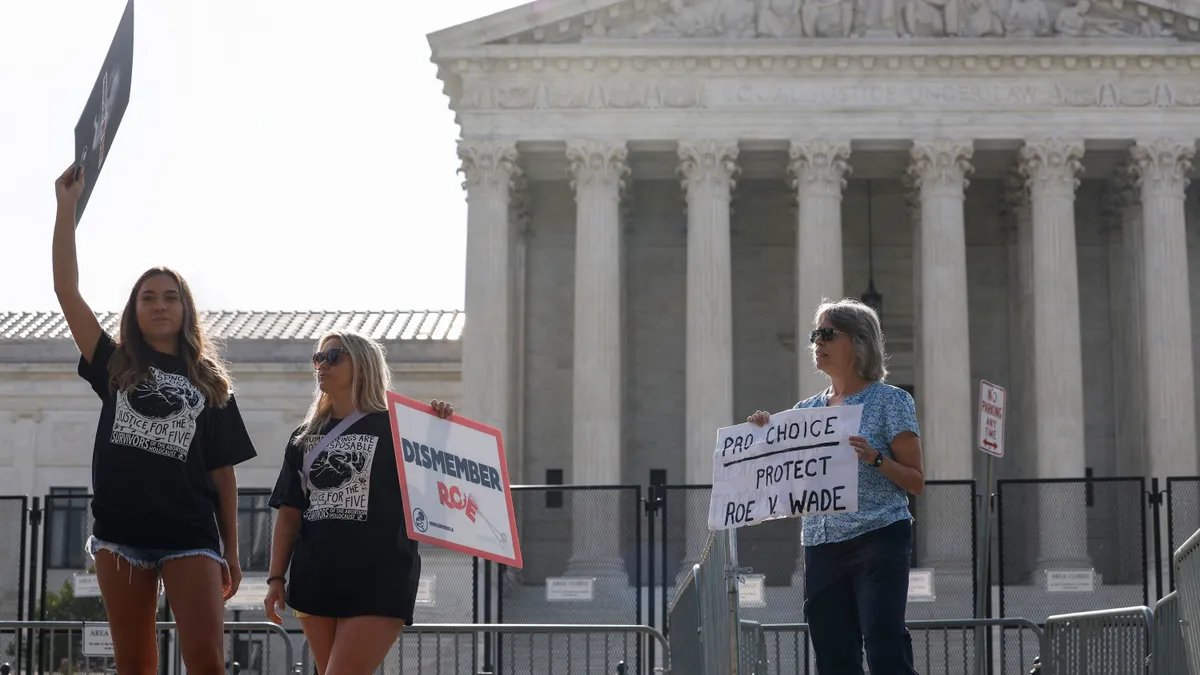Jo Ellen Parker is senior vice president at the Council of Independent Colleges, a former president of Sweet Briar College and a former president of the Great Lakes Colleges Association. Her opinions expressed in this piece do not reflect those of CIC.
Let’s be clear: The sharp increase of women’s participation in higher education in the last half-century has been socially and economically transformative for women, families, and communities.
It came about largely as a result of allowing women to exercise their reproductive rights.
One predictable consequence of legal bans on, or restricted access to, abortion and possibly contraception will be reduced educational attainment for women faced with unplanned pregnancy and parenthood, injured by illegal abortions, or prosecuted and convicted for terminating a pregnancy.
Research clearly shows that when women can choose how to manage their reproductive lives they are more likely to stay in school and earn degrees. For example, only one-third of student parents enrolled in college complete a degree within six years, compared to one-half of non-parent students. A briefing paper from the Institute for Women’s Policy Research notes that “the legalization of abortion in the 1970s increased both high school graduation and college attendance for Black women — as well as increased labor force participation.”
As educational institutions, schools, colleges and universities have an essential stake in the debate over reproductive rights. In a post-Roe v. Wade environment, educators face daunting challenges if they hope to prevent erosion in the educational achievement, and therefore workforce participation and economic contributions, of women.
What are the issues that secondary and higher education leaders must consider?
One set of considerations involves student support. Women facing unwanted pregnancies who hope to stay in school need specific, and frankly costly, support. If they become parents, these students typically need additional financial aid to support the costs of tuition and a growing family if they are to stay in school. Otherwise, they must sacrifice their long-term educational and earning potential to meet immediate financial needs.
They also need reliable, safe, and affordable child care, of course. They need flexible schedules and advisers trained to help them integrate their parental and educational priorities.
Those who become pregnant but do not wish to become parents also need supports to stay in school, including counseling; those damaged by illegal or amateur abortions need medical and mental health care and potentially now legal services. Those of us old enough to remember campus life pre-Roe will recognize the challenges for campuses and student services.
The burden of helping these students continue their educations will be placed on schools and colleges, already operating under severely constrained budgets. In the absence of increased public support for financial aid, child care and social services, it is unrealistic to expect the individual campuses will be able to dedicate the resources needed to provide these services to their own students — with the predictable result that women’s persistence and completion rates will drop.
Another set of issues emerges when conflicts arise between caring for students and complying with the law. (This is not an unfamiliar conflict to educators, who can face similar challenges around student alcohol consumption and undocumented students.) Each institution, in light of its own mission and circumstances, will face wrenching questions.
Will its student peer advisers be prevented from sharing information with fellow students about abortion services and resources? Will its health services? Will its counselors, protected by confidentiality, be able to share information about reproductive health care in their patients’ best interests as they see it? How will the inevitable protests and activism emanating from campus women’s centers be met? Under laws such as that already in effect in Texas, will colleges and universities encourage or forbid staff from reporting students known, or suspected, to have sought an abortion?
Views about the appropriate public policy around contraception and abortion vary among college and university presidents and boards, just as they do among the general population. I leave aside the question of what an institution’s stance on those contentious issues might be. But I do appeal to educators across the nation to think, seriously and urgently: With the landscape for women’s reproductive rights changed, what will your institution do to prevent the erosion of women’s hard-won achievements in higher education?












